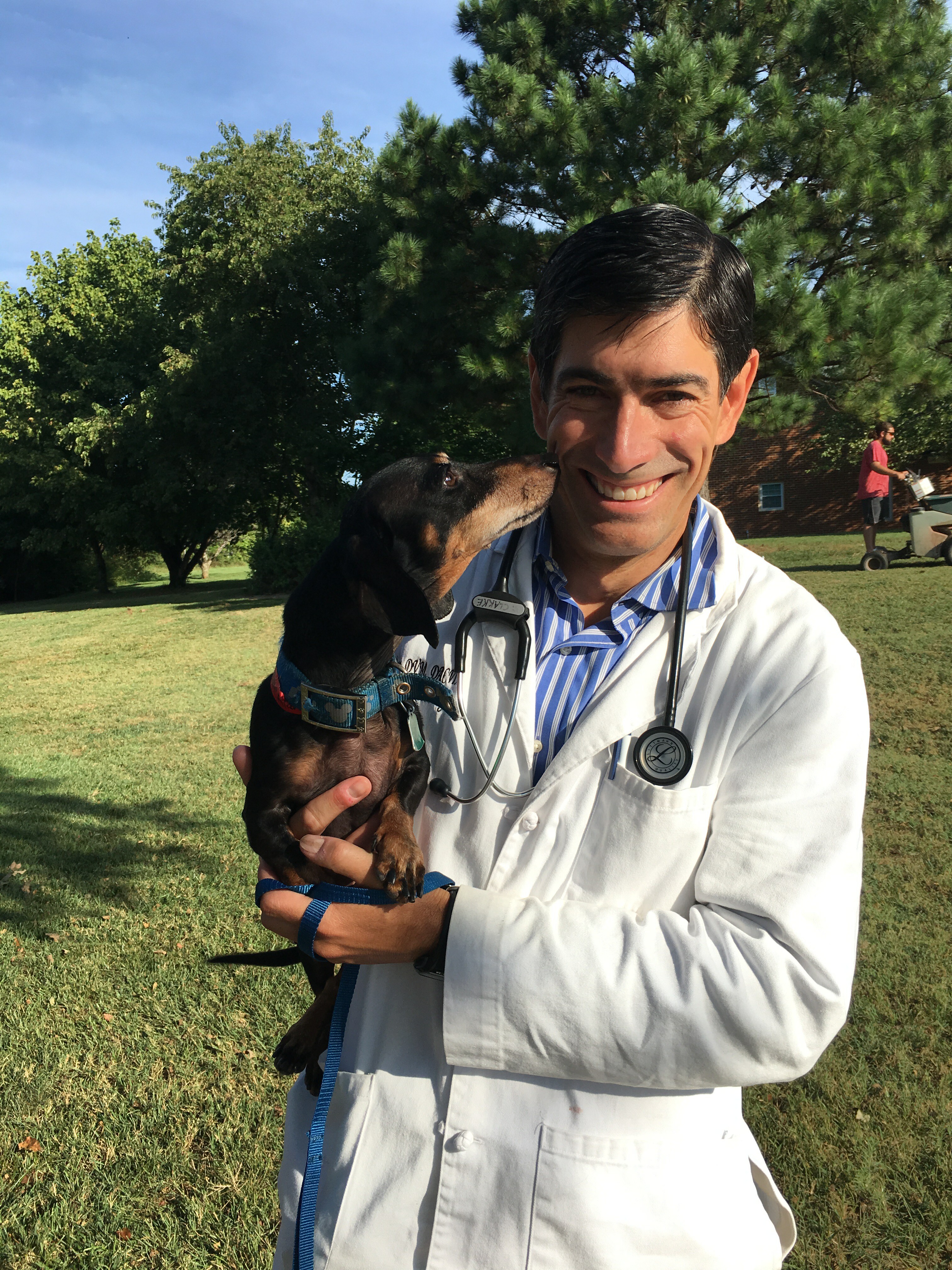What Happened To Ozzie?
by Linda Allard
September 4, 2018

Being the person to foster the first dog rescued by K Kids, I knew right away what I would write my blog about. I was doing all the daydreaming of sunshine and rainbows that we do when we have a puppy. Unfortunately, two weeks later everything changed. My dachshund, Ozzie, went down and, if you’ve been around the breed, you know that means his back went out. Essentially he was no longer able to use his back legs. He was paralyzed.
Bear in mind that I’ve been rescuing and fostering dachshunds for years. I’ve seen cart dogs and had many conversations about IVDD, but none of that prepared me for what was happening to my own dog. It happened on a weekend, of course, and my mind went completely blank. Luckily I’m part of a rescue group, so I had someone to call for help that could tell me what to do. Having years of experience, I knew what I should do, but the shock of it happening to my dog left me unable to think clearly.
Because of this experience, I have a feeling that I’ll be a life-long IVDD poster child. I want to help others prevent it from happening to them as well as make sure they’re able to find resources quickly if it does. In my case, as it is with so many, Ozzie wasn’t doing anything special when it happened. He was just walking across the floor. I have since heard stories of others actually waking up to find their dog unable to move.
My plan is to keep researching IVDD, but for now let me share a few things that I’ve learned that might help you should you find yourself in my shoes.
· If your dog is suddenly having issues walking, like dragging a back leg or walking like it’s drunk, put him/her in a crate while you figure out what to do. Minimizing movement and crate rest is the best thing to do for a dog that is having a disc issue.
· If your dog is shaking all over and looks like it’s in pain, even if still walking, put the dog in the crate.
· Time is of the essence, so my suggestion is to take your dog to the vet right away if you suspect a disc issue. If your dog ends up needing surgery, the faster it’s done the better chance of a full recovery. It’s also possible that a visit to a vet might show that something else is going on, or it might prevent surgery from being needed at all.
· If you do make the decision to have surgery, be prepared to bring a dog home that may not be able to walk at all as our vet, Dr. Jeff Clarke of VRCC, had explained. It’s completely normal for your dog to be unable to use its hind legs for several weeks, so be patient. Every dog is different, and recovery takes time. I was in shock when my dog couldn’t walk after the surgery. It would have been easier if I had a more realistic expectation.
· Prepare for when you bring your dog home. Your dog will need to be on strict crate rest, which means being in the crate all the time except to go outside to use the bathroom. If you’re like me, this will be your biggest challenge. A barking dog or unhappy dog is hard to ignore. You may think that it’s okay to put the dog on your lap or that maybe a little time out of the crate won’t hurt. It absolutely could mean the difference between a full recovery and a less than successful outcome.
· Having a wire crate that your dog can see out of will be helpful. Some dogs end up needing an X Pen. Talk with your vet and follow the instructions given.
Now let’s talk about the elephant in the room. Surgery is really expensive, and it’s possible that surgery just isn’t within your budget. That’s ok. We’re all at different places in our finances, and no one should feel bad if surgery is just not financially possible. Your vet should be able to help you come up with a plan for your dog’s best chance at recovery. Many dogs are able to recover with an extended period of strict crate rest, and when I say an extended period I’m talking 6 weeks or more. Even with surgery you will have significant crate rest time. There are vets who specialize in this area, so seek help from one in your area.
Find support. There are online groups like dodgerslist.boards.net that can help. They’ll offer you online support and a community of others in the same situation so you don’t feel alone. You can also reach out to a local rescue group and ask them if they know people in your area that can talk with you. This is a scary time, and just talking with others who have gone through the same thing is very helpful.
I’m sure I’ll share more as we go through this process. At this time Ozzie is 3 weeks post-surgery and able to stand on his hind legs, but he still struggles to walk. He sits in his crate and barks a lot. I know he doesn’t understand and wants me to let him out. As much as I want to let him out even for a short while, I know that I’m doing the best thing by leaving him in the crate and dreaming of a day when he can walk in the back yard again. Letting him out early might make him happy in the short term, but if he reinjures himself he could end up permanently paralyzed. It’s just not worth the risk.

